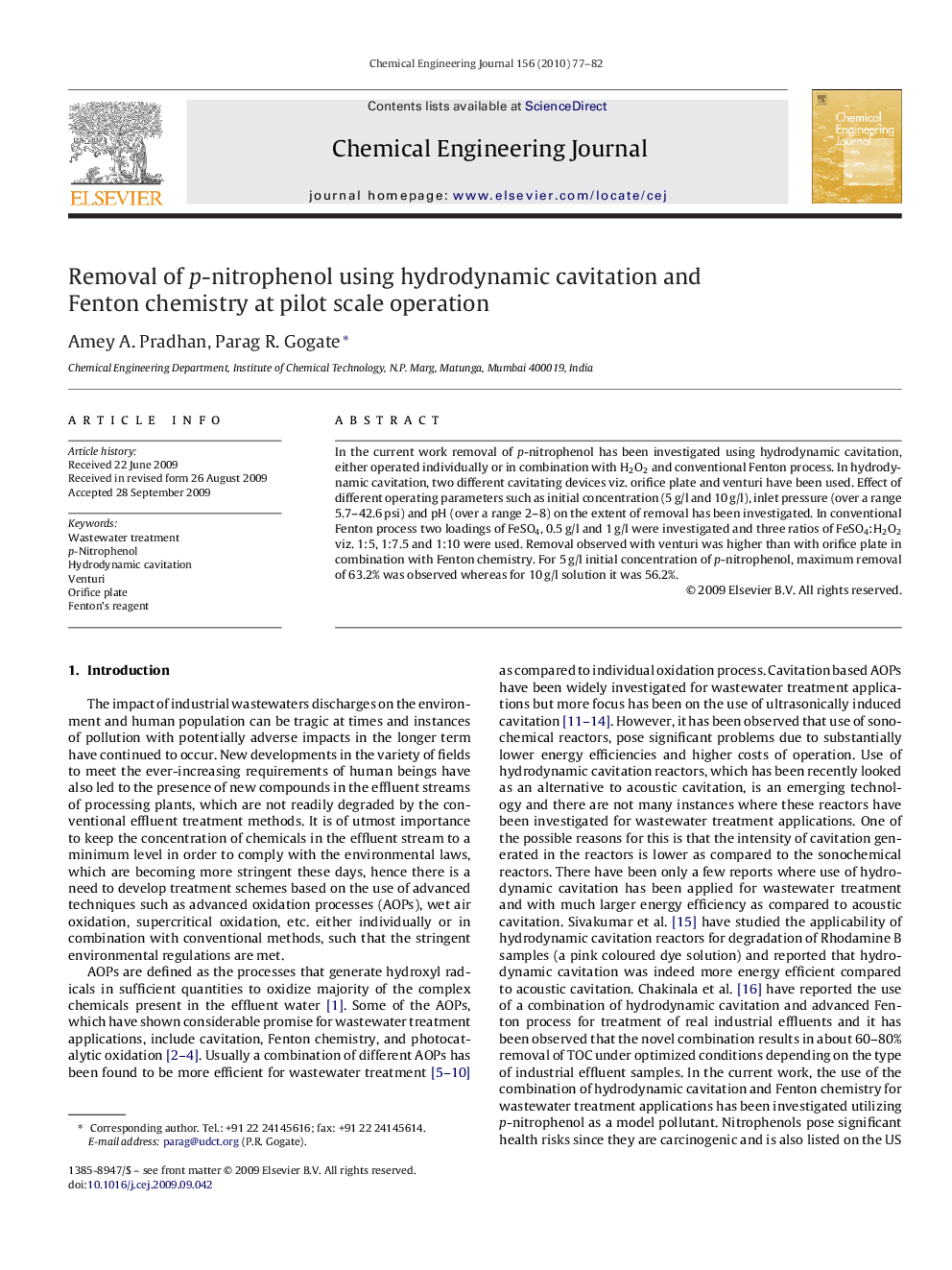| Article ID | Journal | Published Year | Pages | File Type |
|---|---|---|---|---|
| 153161 | Chemical Engineering Journal | 2010 | 6 Pages |
In the current work removal of p-nitrophenol has been investigated using hydrodynamic cavitation, either operated individually or in combination with H2O2 and conventional Fenton process. In hydrodynamic cavitation, two different cavitating devices viz. orifice plate and venturi have been used. Effect of different operating parameters such as initial concentration (5 g/l and 10 g/l), inlet pressure (over a range 5.7–42.6 psi) and pH (over a range 2–8) on the extent of removal has been investigated. In conventional Fenton process two loadings of FeSO4, 0.5 g/l and 1 g/l were investigated and three ratios of FeSO4:H2O2 viz. 1:5, 1:7.5 and 1:10 were used. Removal observed with venturi was higher than with orifice plate in combination with Fenton chemistry. For 5 g/l initial concentration of p-nitrophenol, maximum removal of 63.2% was observed whereas for 10 g/l solution it was 56.2%.
